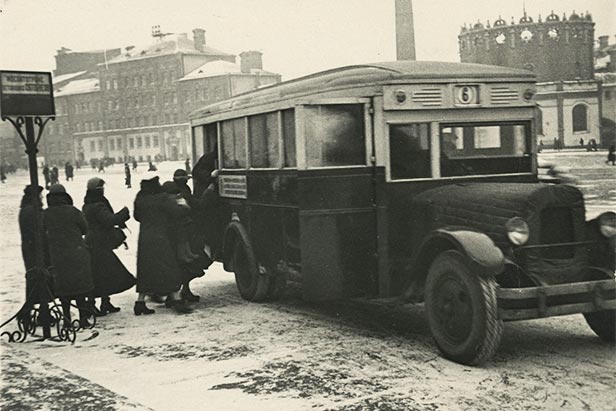

In this anniversary year for the Moscow subway (on May 15 it will be 80 years old), the Moscow Museum is holding an exposition on the story of transport in the city through all its history.
Press photo
The earliest transport in Moscow was the traditional horse-drawn carriage. They were mostly driven by peasants coming to the city for winter to earn money. During the summer, they were back farming.
Press photo
In the 19th century, Moscow railroads began to develop rapidly. In 1872-1874 rails were laid for horse-drawn carriages, turning them into horse-drawn rail cars.
Press photo
The city needed trams, and they first appeared in 1899. To begin with, they simply followed the tracks used by horse-drawn rail cars. But in the 1920s they became more popular and faster.
Press photo
Muscovites preferred using trams and by the end of the 1940s the city's tramlines peaked at 560 km. Over the next 40 years the total length decreased by 100 km, replaced by other means of transport.
Press photo
The beginning of the 20th century saw a push toward the futuristic Moscow Metro. The first station opened 80 years ago in 1935. It was a short section of track (now part of the red line) that ran from Sokolniki to Park of Culture, with a branch to Smolenskaya.
Press photo
In the 20th century, transport also moved to the city’s waterways. Moscow is built on the Moskva River, which finally started being used to transport people.
Press photo
This photo from the 1930s depicts a ship called “In Memory of Kirov” (a social revolutionist who died in 1934). The ship went down the Moskva River under the Moskvoretsky Bridge with a banner reading “Glory to the Great Stalin” atop its mast.
Press photo
The first taxi appeared in Moscow in 1907, when the newspaper "Voice of Moscow" published a report on Oldsmobile cars in the streets of US cities displaying a “Carrier. Payment on agreement” signboard. “Taxi” is short for “taximeter,” a device used to calculate the payable fare.
Press photo
Nowadays, as Moscow builds more Metro stations, giving more space to cyclists, and produces new-style tickets, it is quaint to look back at the city’s transport history, with its old-fashioned charm and entirely different rhythm. The exhibition runs until May 31 at the Moscow Museum (2, Zubovskiy Bulvar).
Press photoSubscribe
to our newsletter!
Get the week's best stories straight to your inbox